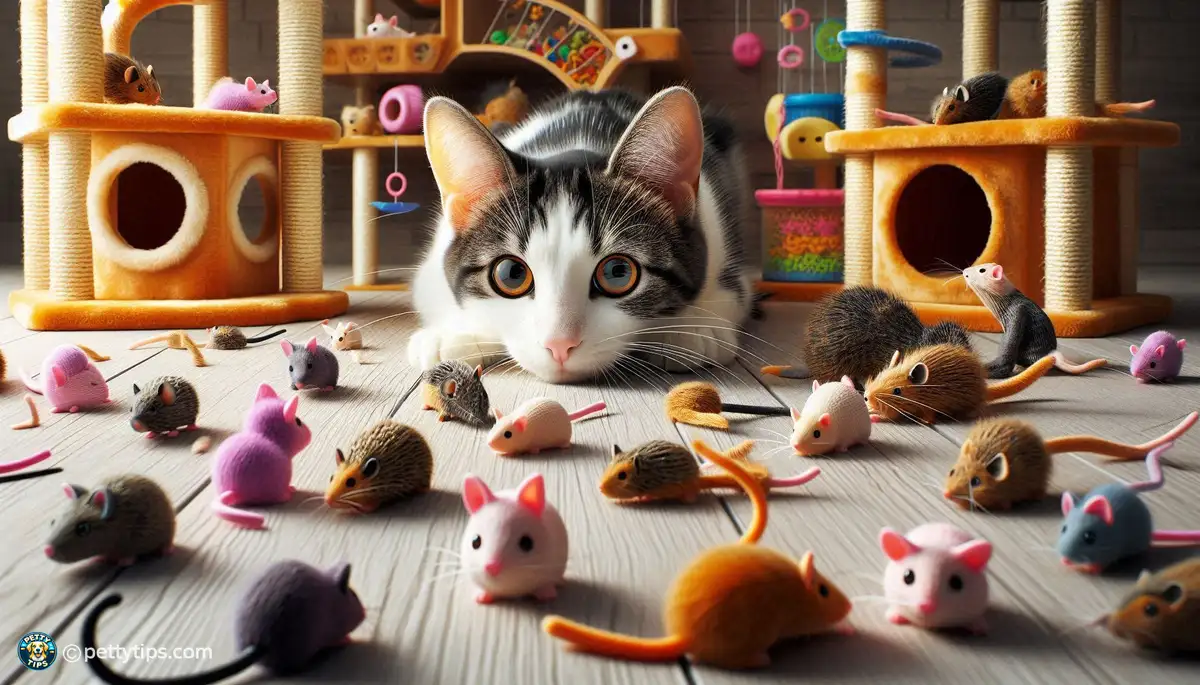- Home
- Cat Behavior
- Feeding Strategies to Satisfy a Cat's Hunting Instincts
Feeding Strategies to Satisfy a Cat's Hunting Instincts

The Predatory Nature of Cats
Cats are natural-born hunters, descended from ancestors who relied on their hunting skills for survival. This instinct to hunt is deeply ingrained in their DNA, shaping their behavior and preferences. Even the most domesticated house cat retains this primal urge to stalk, chase, and capture prey.
The Significance of Satisfying Instincts
Fulfilling your cat's hunting instincts is crucial for their physical and mental well-being. When deprived of opportunities to express their natural behaviors, cats may become bored, stressed, or even develop behavioral issues. Providing outlets for hunting-related activities not only enriches their lives but also strengthens the bond between you and your feline companion.
Mimicking the Hunt: Interactive Feeding Techniques
Puzzle Feeders: Engage Their Minds
puzzle feeders are ingenious devices designed to stimulate your cat's mind and encourage natural hunting behaviors. These interactive toys require your cat to work for their food, mimicking the challenge of catching prey in the wild. By dispensing small amounts of kibble or treats as your cat plays, puzzle feeders provide mental stimulation and satisfy their hunting instincts.
Food-Dispensing Toys: Tap into Their Instincts
Food-dispensing toys are another effective way to engage your cat's natural hunting instincts during mealtime. These toys require your cat to manipulate the device to release food, encouraging physical activity and problem-solving skills. By adding an element of challenge to feeding, food-dispensing toys keep your cat entertained and mentally stimulated, reducing the risk of boredom-related behaviors.
Creating a Multi-Sensory Experience
Scent Stimulation: Appeal to Their Sense of Smell
In the wild, cats rely heavily on their keen sense of smell to locate prey. Harnessing this instinctual preference, you can enhance your cat's feeding experience by incorporating scent stimulation. Scatter dried herbs or sprinkle a small amount of catnip around the feeding area to pique their interest and mimic the scent of fresh prey.
Visual Stimulation: Make Mealtime Exciting
Cats are visually-oriented creatures, drawn to movement and novelty. To captivate their attention and satisfy their natural instincts, consider incorporating visual stimuli into their feeding routine. Use interactive laser pointers or dangling toys to create movement around the feeding area, simulating the thrill of stalking prey in the wild.
Embracing the Raw Diet Movement
Understanding the Raw Feeding Philosophy
Proponents of the raw diet movement advocate for feeding cats a diet that closely resembles what they would consume in their natural habitat. This typically includes raw meat, bones, and organs, mimicking the nutritional composition of prey animals. Advocates argue that a raw diet is more biologically appropriate for cats and can promote better health and vitality.
Practical Considerations for Raw Feeding
While the raw diet may offer benefits, it's essential to approach it with caution and careful consideration. Raw meat can harbor harmful bacteria, posing risks to both your cat's health and your own. Additionally, formulating a balanced raw diet requires knowledge and expertise to ensure your cat receives all the necessary nutrients. If you're interested in exploring raw feeding, consult with a veterinarian or pet nutritionist to develop a safe and balanced meal plan for your feline companion.
Fostering Natural Foraging Behaviors
Scavenger Hunts: Tap into Their Instincts
Scavenger hunts are a fun and interactive way to encourage your cat's natural foraging instincts. Hide small portions of their food around the house or in interactive toys, prompting them to search and "hunt" for their meals. This activity not only provides mental stimulation but also satisfies their instinctual drive to hunt and capture prey.
Rotating Feeding Locations: Keep Things Interesting
In the wild, cats must navigate diverse environments to find food, leading to a varied and dynamic hunting experience. You can replicate this diversity by rotating your cat's feeding locations throughout your home. By introducing new environments and challenges, you keep mealtime exciting and engage their natural hunting instincts in different settings.
Conclusion: Nurturing Your Cat's Wild Side
Understanding and satisfying your cat's natural hunting instincts is essential for their overall health and well-being. By incorporating interactive feeding techniques, creating a multi-sensory experience, and embracing the raw diet movement, you can provide your feline friend with enriching opportunities to express their innate behaviors. Whether through puzzle feeders, food-dispensing toys, or scavenger hunts, finding creative ways to engage your cat's hunting instincts strengthens your bond and enhances their quality of life. So, embrace your cat's wild side and unleash the hunter within!
